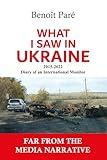The occasion of electing another Pope was a spectacle in time and, in many ways, outside it. It was the one rare occasion in the twenty-first century where ancient ceremony, the old boy network – many presumptive virgins – along with festive dressing up, were seen with admiration rather than suspicion. Feminists were nowhere to be heard. Women knew their place; the phallocrats were in charge. Secret processes and factions, unscrutinised by media or any temporal body, could take place in secure, deliberative seclusion. Reverential followers of unquestioning loyalty turned up to the square of St. Peter’s Basilica in Rome awaiting the news of the election. Then, the white smoke rises from the Sistine Chapel’s chimney, with gasps of excitement and elation.
Taking a punt on who the new leader of the Catholic Church will be once the conclave of Cardinals concludes is a failing bet. A mischievous remark was once made by an Australian commentator on Church matters that you would have better chances picking a winner at the Melbourne Cup horse race than the next pontiff.
The choice of Leo XIV, formerly Cardinal Robert Francis Prevost, Prefect of the Dicastery of Bishops, was suitably surprising. Few had their cards on a pick from the United States, let alone a pick from Chicago, Illinois. But ever politic, the church narrative was quick to point out his naturalised status as a Peruvian and his elevation to the position of Bishop of Chiclayo in September 2015. He had been an Augustinian missionary. Not only was he a Western hemispheric representative, but one who doubled up as truly American, comprising North and South. This was an identitarian jackpot, a treat for the advertising wing of the Vatican.
Clues on what Leo’s reign will look like are few in number. “We must seek together,” he urges, “how to be a missionary Church, a Church that builds bridges, dialogue, always open to receive like this square with its open arms, all, all who need our charity, our presence, dialogue and love.” His choice of name suggests a lineage of diplomatic and doctrinal-minded figures.
Much Fourth Estate commentary has been vague, laden with cryptic references and snatches of speculation. In the absence of detail, obsession over minutiae becomes paramount. He turned up in the garb of Benedict XVI, suggested one observer on the BBC World Service, but spoke like his immediate predecessor, Pope Francis I. “We saw a balance of the aesthetics of the traditional church,” opined Charlie Gillespie of Sacred Heart University, “along with language that sounded like Pope Francis.”
Any use of the term “moderate” is also bound to be meaningless, though Leo’s brother, John Prevost, has aired his own prediction: “I don’t think we’ll see any extremes either way.” Such a figure is straitjacketed by doctrine and buttoned up by process. One who is bound to follow ancient texts drafted by the superstitious, however modernised in interpretation, will be caged by them. In 2012, for instance, Prevost was revealing on that very issue when commenting on church attitudes to homosexuality. Certain Western values, he thought, proved sympathetic to views “at odds with the gospel”, one of them being the “homosexual lifestyle.”
The same cannot be said about Leo’s attitudes to migrants and the poor. A social media account bearing Prevost’s name did not shy away from attacking the immigration policy of the Trump administration via a number of reposted articles. In February, for instance, an article from the National Catholic Reporter titled “JD Vance is wrong: Jesus doesn’t ask us to rank our love for others” featured. Suffice to say that his selection did not impress certain figures in the MAGA movement, most notably Steve Bannon. Calling Leo the “worst pick for MAGA Catholics,” Bannon sniffed a conspiracy. “This is an anti-Trump vote by the globalists that run the Curia – this is the pope Bergoglio [Francis I] and his clique wanted.”
The orbit of other problems will also be impossible for the new pontiff to escape. The stain of clerical sex abuse remains an immovable reminder of organisational defect and depravity. Terrier like activists continue their sorties against the Church, demanding redress and publishing their findings on such outlets as ConclaveWatch.org. Earlier this year, the Survivors Network of those Abused by Priests (SNAP), along with Nates Mission, another survivors’ organisation, named the then Cardinal Prevost as one of six figures seminal in covering up sexual abuse in the church. These formed a dossier of complaints submitted to Cardinal Pietro Parolin, the Vatican’s secretary of state. According to the campaigners, the dossier documenting claims of mismanagement and cover-ups marked “the first time multiple high-ranking cardinals have been targeted … by co-ordinated, survivor-led action.”
An open letter published on May 8 by SNAP also proved sharp on the election. “The sex offender in the collar commits two crimes: one against the body, and one against the voice. The grand pageantry around your election reminds us: survivors do not carry the same weight in this world as you do.” The organisation further stated that Prevost, when provincial of the Augustinians, permitted Father James Ray, a priest accused of child abuse with restricted ministry since 1991, to reside at the Augustinians’ St. John Stone Friary in 2000. From the outset, the Pope’s ledger is already a heavy one.










